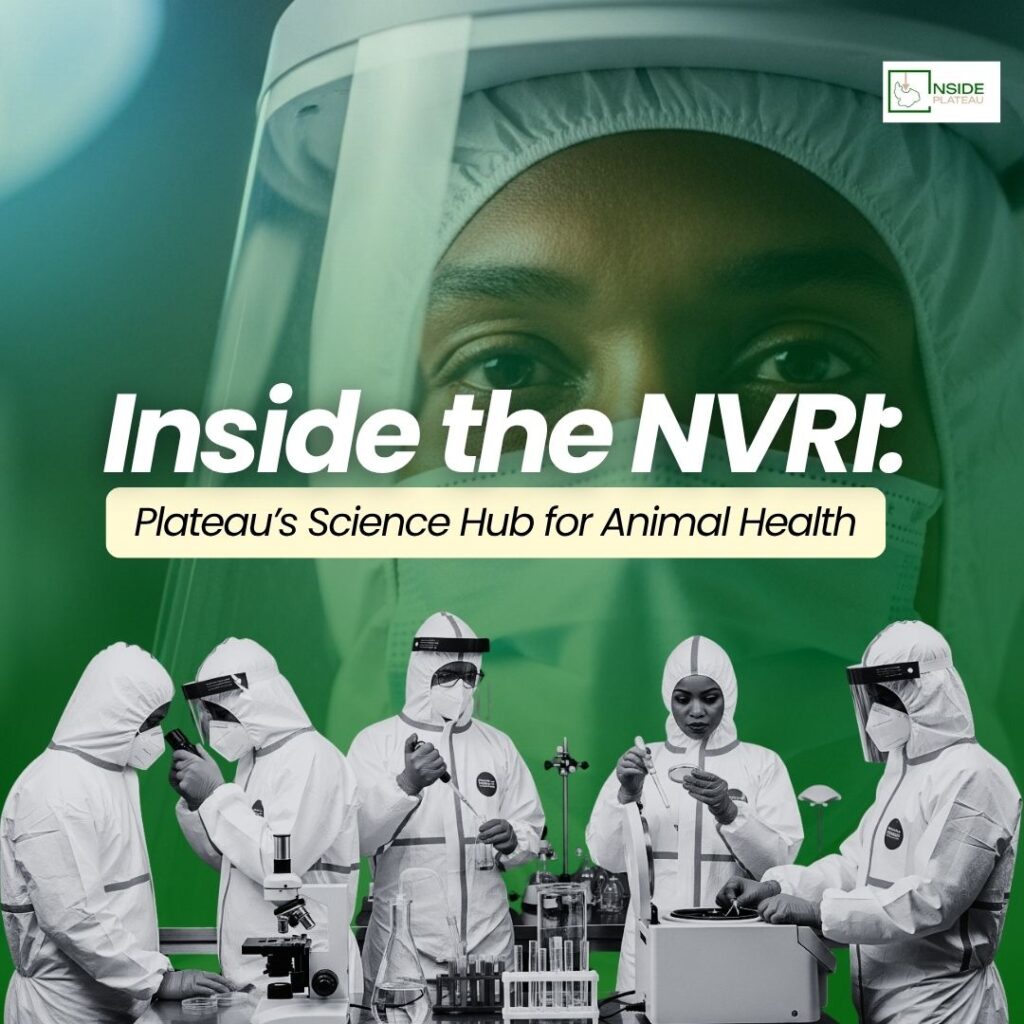Somewhere in Africa, nestled amid rolling hills and mist-kissed valleys, there is a research institute whose work has quietly shaped the lives of millions of Nigerians. An institute that predates modern Nigeria itself, yet whose influence is as contemporary as the breakfast eggs on your plate. This is the National Veterinary Research Institute (NVRI), Vom, and it is one of Africa’s oldest and most pioneering centers of veterinary science.
Zoom in closer, and you would see why its relevance has only grown. In Nigeria, livestock is not just part of agriculture; it is woven into the economy, culture, and daily sustenance of the people. Chickens scratch the soil in backyards, goats nibble by the roadside, and cattle form the backbone of local trade. Diseases, however, have long been a threat to these lifelines, with rinderpest in the late 19th and early 20th centuries having wiped out entire herds, leaving farmers and communities devastated. Hence, the need for veterinary intervention, and nowhere was that need more acutely felt than in what would become Plateau State.
It is no coincidence, then, that in 1924 the Veterinary Department relocated from Zaria to Vom, establishing what would later become NVRI. Here, amidst the plateau’s elevated terrain and temperate climate, the Institute began producing anti-rinderpest serum, pioneering vaccines, and developing methods to control livestock diseases that would later ripple across West Africa. The choice of Vom was no accident as it was a natural laboratory, rich in livestock, locally grown feed, and communities steeped in animal husbandry knowledge.
The Plateau Advantage: Why NVRI Thrives Here
But why Vom? Why Plateau? Why here, in this elevated corner of Nigeria, did veterinary science not only take root, but flourish for over a century? The answer is woven into the very fabric of the land, the people, and their livestock.
From the beginning, NVRI has turned indigenous, locally available resources into instruments of innovation. Take the grains, for instance (maize, guinea corn, beniseed, and acha) these aren’t exotic imports or high-tech lab inputs. They are crops grown across Plateau farms and households.
Consequently, when NVRI developed its feed-based Newcastle Disease vaccine, it experimented with these grains as carriers. The idea was brilliant in its simplicity: chickens could ingest the vaccine while pecking at feed they were already familiar with. It was a fusion of science and tradition; a research rooted in reality, designed for the everyday backyard poultry keeper, the farmer whose livelihood and breakfast depended on the health of a handful of chickens.
Then there’s the diversity of livestock the Plateau naturally provides. Poultry, goats, sheep, and cattle have long grazed across the region’s fertile lands, a mosaic of species living side by side. For researchers, it was a dream laboratory: the opportunity to study multiple species under real-life conditions, tracking disease patterns, testing treatments, and refining vaccines in a way no other region in Nigeria could replicate.
Add to that the climate and geography (temperate, moderate, and consistent) and you would find that the Plateau offered a stable backdrop for controlled experiments and long-term studies. Animals thrived here, pathogens behaved predictably, and research could be conducted without the interference of extremes; conditions that are far less forgiving in the hotter, more humid regions of the country.
But perhaps the greatest advantage lay in the people themselves. NVRI never worked in isolation. It collaborated with local farmers, village heads, and livestock keepers. These communities contributed not just their animals, but their knowledge: how to rear them, what feed works best, which diseases strike when. NVRI’s science was grounded in this lived experience. Vaccines, medicines, and husbandry practices weren’t designed in a vacuum; they were designed to work here, in Plateau, for the people of Plateau.
And so, Plateau itself became part of the laboratory. The land, the climate, the livestock, the people, all integral elements of NVRI’s century-long success. It’s no coincidence that from this corner of Nigeria emerged solutions that would go on to protect households across the country. The Institute didn’t just survive here; it thrived, because the Plateau offered more than space and soil. It offered opportunity, resources, and a community willing to participate in science that mattered.
It is this very environment—rich in livestock, crops, knowledge, and cooperation—that has allowed NVRI to develop vaccines that touch the daily lives of Nigerians, from backyard chickens pecking at acha-fed vaccines to the cattle that form the backbone of local economies. Plateau State became more than just a location on the map; it emerged as the heart of veterinary innovation in Nigeria, and the beating pulse behind a century of life-saving research.
From Rinderpest to Backyard Chickens: NVRI’s Legacy in Action
Over the decades, NVRI has expanded from combating rinderpest to tackling nearly every major animal disease in the country. Its thermostable Newcastle Disease vaccine (Strain I-2) has arguably had the most tangible impact on everyday Nigerians. Consider this: nearly every household that keeps backyard chickens, whether in Jos, Kano, or Lagos, has at some point benefited from this vaccine, often without even knowing it. It protects poultry from devastating outbreaks that could wipe out entire flocks overnight, securing eggs for breakfast, meat for the table, and income for small-scale farmers.
NVRI’s vaccine innovations don’t stop there. Its portfolio includes protection against fowl pox, infectious bursal disease (Gumboro), rabies, anthrax, Peste des Petits Ruminants (PPR), Lumpy Skin Disease (LSD), and more. Many of these vaccines are produced using local pathogen strains, ensuring that livestock are protected against diseases they are most likely to encounter. In other words, NVRI’s work is applied science that goes beyond the theoretical to safeguarding lives, livelihoods, and food security.
The Institute also leads in veterinary training, diagnostic surveillance, and the development of transboundary disease strategies. Its laboratories, including a BSL-3 facility and a network of 23 outstations, allow it to monitor disease patterns across Nigeria and West Africa, giving farmers and governments the tools they need to respond quickly and effectively.
A Century of Science, A Lifetime of Pride
From its first anti-rinderpest serum in 1924 to modern efforts like feed-based NDV vaccines and genomic research on sheeppox and goatpox, NVRI has continuously pushed the boundaries of veterinary science. Yet, the story is as much about people and place as it is about science. The Plateau — with its climate, crops, livestock, and communities is a partner in every discovery, every breakthrough, and every life saved.
For those who grew up in Vom, or have ever passed through its rolling hills, NVRI is not just a research institute, but also a source of local pride, a testament to how Nigerian ingenuity, combined with local resources, can make a global impact. And for the rest of Nigeria, every chicken that survives Newcastle Disease, every goat protected from PPR, and every cow shielded from CBPP carries a piece of Vom, a piece of the Plateau, and a piece of NVRI’s century-long legacy.
Somewhere in Africa, tucked into Plateau State, science quietly reshapes lives. And for over a hundred years, NVRI has been championing exactly that.

